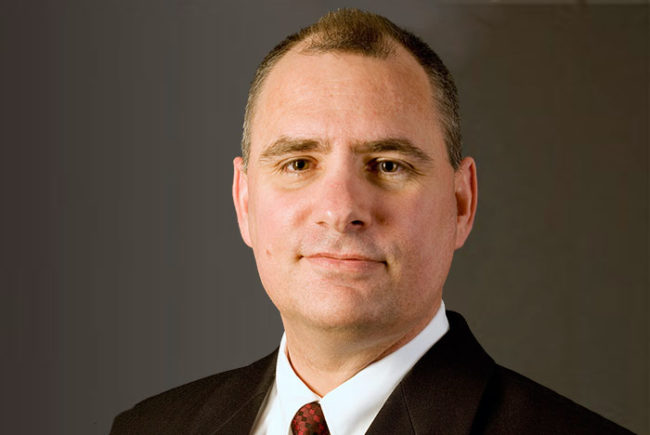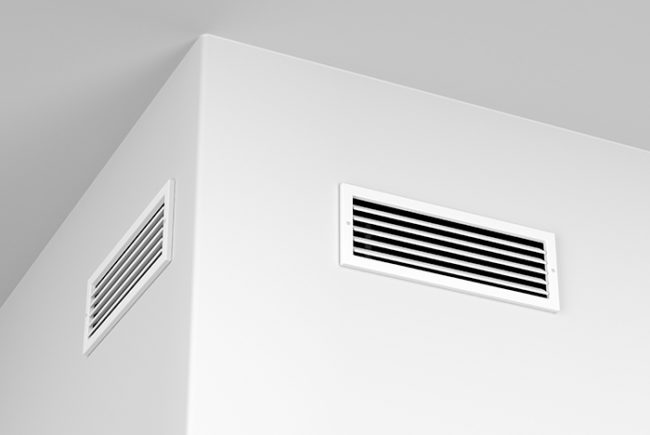 Whether an environmental services (ES) professional is a seasoned manager or a newbie, he or she must consider many things when preparing a departmental budget. However, the most critical element is alignment with the future vision of the health care organization, which, in turn, is represented by a master budget. It also represents the forecasted target set for the whole organization and incorporates all income and expenditures estimated for the organization. ES budgets should be reflective of anticipated revenue to maintain healthy operating margins.
Whether an environmental services (ES) professional is a seasoned manager or a newbie, he or she must consider many things when preparing a departmental budget. However, the most critical element is alignment with the future vision of the health care organization, which, in turn, is represented by a master budget. It also represents the forecasted target set for the whole organization and incorporates all income and expenditures estimated for the organization. ES budgets should be reflective of anticipated revenue to maintain healthy operating margins.
Budget modeling
Most health care organizations operate under one or more of the following budget models:
Fixed budget. These are budgets that remain unchanged over the budget cycle and are not related to the level of revenue. This model is most often used when developing the budget. However, it can lead to challenges in meeting ES needs if revenue falls during the upcoming year. For example, plans to do additional spring cleaning can be impacted if a low census causes a reduction in staffing hours to protect financial margins. Likewise, scheduled educational opportunities might need to be withheld if dollars are not available.
You may also like |
| Tools to improve environmental services |
| Achieving optimal cleaning efficiency |
| 2015 ES Department of the Year awards |
| |
Flexible budget. Following real-time business needs, flexible budgets are predetermined expenditures based on the revenue expected that differ with census. For example, the ES department will reduce supplies and staffing hours when patient rooms or diagnostic departments are not fully occupied, or they may increase staffing hours and supplies when the census is high. However, many areas of the hospital will incur fixed ES costs for areas that are occupied regardless of census.
Fixed-yet-flexible budget. Often the “true to life” ES budget, a fixed-yet-flexible budget model is based upon historical data and future predictability. Using this method, continual adjustments are made throughout the budget cycle to ensure year-end profitability. When looking at space types in terms of revenue-producing space (census-based) and nonrevenue-producing space (static), the opportunity to budget precisely is apparent.
Budget categories
ES departmental budgets should be considered in the context of a couple of categories. While a health care organization may break them down to more of a granular level, the basics include the following:
Capital. This concerns allocating the use of capital assets that have a lifespan far in excess of one year. These are assets that are normally used up in day-to-day operations. Furniture, fixtures and equipment are typical examples of capital expenditures. Capital expenditures in the ES department may include cleaning carts, vacuum cleaners, general floor machines, carpet shampoo machines, sewing machines and laundry equipment. The hospital’s building itself also is a capital asset. For instance, an upgrade of interior finishes may be required.
Operating expenses. Forecasted expenses and revenues associated with the routine operations of the health care organization must be known. Operating expenditures are those expenses the hospital incurs to generate revenue in the normal course of doing business. In the ES department, the most expensive operational cost is the salary and wages or labor cost. The inventory items, such as cleaning and guest supplies, are also operational expenses as are the waste and recycling streams.
A reduction in operating expenses is always equivalent to revenue. This is even more important when margins are tight. For example, $1 in expense reduction is equal to $25 in revenue when managing at a 4 percent margin. It is important to remember that expense reduction plays a significant role in reducing the organization’s dependency on revenue.
As patient volumes continue to fall, one can imagine its importance in the flexible budget model. Likewise, when volumes increase, ES operations need to ramp up to ensure that organizational needs are being met.
Predictability and variation
Measurable history creates a substantial and trustworthy account of how budgets and effectiveness came to be. Understanding predicted changes in the upcoming budget model year is critical to model accuracy. Some elements to consider include:
• Labor. This is the most costly budget line item to the ES department. Facilities professionals should pay attention to contract employee agreements and the cost of living. A few percentage points can add up quickly. Labor shortages can lead to overtime and 1.5 times the rate of labor for the same scope of work can devastate a budget.
• Contracted services, maintenance and repairs. Understanding rate changes for contractual agreements makes a huge difference. Many have inflationary escalators built into them. Knowing how they impact the ES budget is important in forecasting costs.
The cost of unpredicted failures of equipment leading to repairs is often not fully known by ES managers. ES professionals should work with the service team to understand the life expectancy, predicted maintenance costs and repair costs so they can plan for them. This can impact operational or capital budget forecasts. ES professionals also should consider the cost of downtime or lost productivity.
• Purging. Many health care providers purge files such as medical records or X-ray films. Too often, unplanned purging will impact the ES budget as the poundage adds up. ES professionals should meet with core departments to discuss upcoming purging of files. They must pay close attention to which files offer revenue to recycle or will become an expense.
• Spill response. Spill response can be unpredictable. However, the risk areas can be identified through a proper hazard vulnerability assessment. This can include laboratories, boiler rooms, sewer and water lines. ES professionals can have a contingency in the ES budget to carry this risk. They should remember to include the costs of restocking cleanup kits.
• Construction and renovation. Larger construction and renovation projects usually include budget allocations for debris removal. However, the cost of waste or recycling removal for smaller projects often goes unnoticed in a project’s budget. ES professionals should talk with facility planners to review the need for budget resources that may become an operational expense.
• Preopenings and occupancy. This includes the planning necessary for the smooth opening of new or renovated square footage to service. The ES department needs to allocate resources for training, compliance, policy and procedure development, increased budget costs, opening parties and similar activities. Many times, these costs are not suggested in the original budget of the upcoming fiscal year. A savvy ES manager needs to be fully aware of an organization’s timeline for master planning and associated projects.
• Other. ES professionals should know their organizations. An organization’s unique circumstances may require the ES department to budget for other considerations.
The revenue side
The revenue stream that ES services can bring to an organization is often overlooked. While expense reduction equates to revenue, the following items can add even more to the bottom line:
Recycling. ES professionals should never think an organization’s waste has no value. Instead, they should think in terms of a commodity. Waste-and-recycling haulers are receiving large amounts of money from reselling recyclables. Items such as cardboard, pallets, paper, glass, tin, cans and X-ray films can bring in money. For example, 50 tons of recyclables at a combined value of 5 cents per pound yields $5,000 in revenue.
ES professionals easily can go beyond recycling from operations to capitalize on the recyclable value from construction and remodeling projects. Items like copper piping, wire, steel studs, fixtures, rubber, carpet, wood, concrete and asphalt bring in dollars to the waste-and-recycling hauler and, in turn, to the organization.
Furniture, fixtures and equipment. ES professionals should not toss furniture, fixtures and equipment into the landfill. This is not only hard on the environment, but increases the organization’s disposal fees. Instead, they should look at reusing furniture, fixtures and equipment items internally to offset replacement costs. Other options are to sell it to a resale company that has the resources to purchase them. Additionally, ES professionals should not dismiss the concept of donating furniture, fixtures and equipment to other organizations or countries.
Services to tenants. Many health care organizations are leasing to medical partners within their own hospitals or medical office buildings. This could consist of providing routine ES services or special tasks during downtimes when hospital volumes are low.
Tenants pay a premium for contracted services. Often a health care organization can subcontract ES needs with greater total value, bringing additional revenue to the hospital. Moreover, the total value goes well beyond the immediate cash flow by allowing the hospital to continually deepen its relationship with tenants.
Other. Everything an ES department does has value. ES professionals should leverage data from patient satisfaction and lower infection rates as key examples. They should improve upon their relationships with other service departments to reduce silos, improving productivity internally and elsewhere. Reducing expenses, increasing revenue and demonstrating the contributions of the ES department not only benefit the health care organization, but also the ES professional’s own value.
Greater outcomes
Doing more with less does not imply loss. It implies providing greater outcomes with the available resources that are in the facility.
Todd Wilkening, CEO of FMadvantage LLC, has 30 years of experience in working directly for health facility owners in property and facilities management. He has served as the vice president of research for the International Facility Management Association’s Health Care Institute (IFMA-HCI) and also is involved in research projects with IFMA-HCI Midwest. He can be reached at toddwilkening@fmadvantage.com.
Beyond the budget numbers
The accompanying article presents a broad understanding of the art of environmental services (ES) budgeting, but also includes information for the ES department to continually evolve in its pursuit of the ultimate operational efficiency and patient experience at minimal costs.
Some specific areas ES managers may want to consider include:
• Concierge services. Often one thinks of concierge services as leaving candy on the pillow, or paying attention to customer wayfinding and reception, or simply anticipating the needs of the customer with a magazine or glass of water.
But studies show that patients often remember their experiences with ES staff members, sometimes even more than their experiences with the medical team. Taking time to personalize the approach with the patient sticks in their minds long after the candy on the pillow is forgotten.
ES departments need to carry budget line items to allow the ES worker to provide this kind of care. Patients expect good medical care, but surprising acts of kindness and compassion can go much further.
• Measurements and dashboards. Analytics are extremely important to ES departments. Cutting-edge facilities have tablets on their carts to track productivity and immediately report concerns and unpredicted variations to the ES routine such as spills. This keeps others on the care team informed, improves upon room turnover time and omits patient disruptions.
It is important to use measurements to determine opportunities and improve against the department’s own baseline. Additionally, this information can be used to compare the standard of excellence against other hospitals.
• Sharing lessons learned. ES professionals should share their experiences with staff, peers, patients and the greater community in a positive way. It is important to celebrate successes and learn from the mistakes of the ES team. Staff members are the organization’s greatest assets, but they require feedback on performance to improve.
Things can and will go wrong. When they do, ES professionals should share what happened, what was learned and thank the patient for the experience to learn. They should do so in a sincere, personalized and understanding way.
• Nontraditional approaches. Health care ES departments historically have acted on the need to maintain a clean and safe department with minimal exposure to infection and disease at the lowest possible cost.
However, today’s health care mandates require ES professionals not only to react to the needs of the patients’ physical well-being but spiritually as well. Every hospital staff member is responsible for what should be a seamless side of care. The difference ES professionals make in the lives of others is priceless to the customer, organization and the ES departmental budget.





